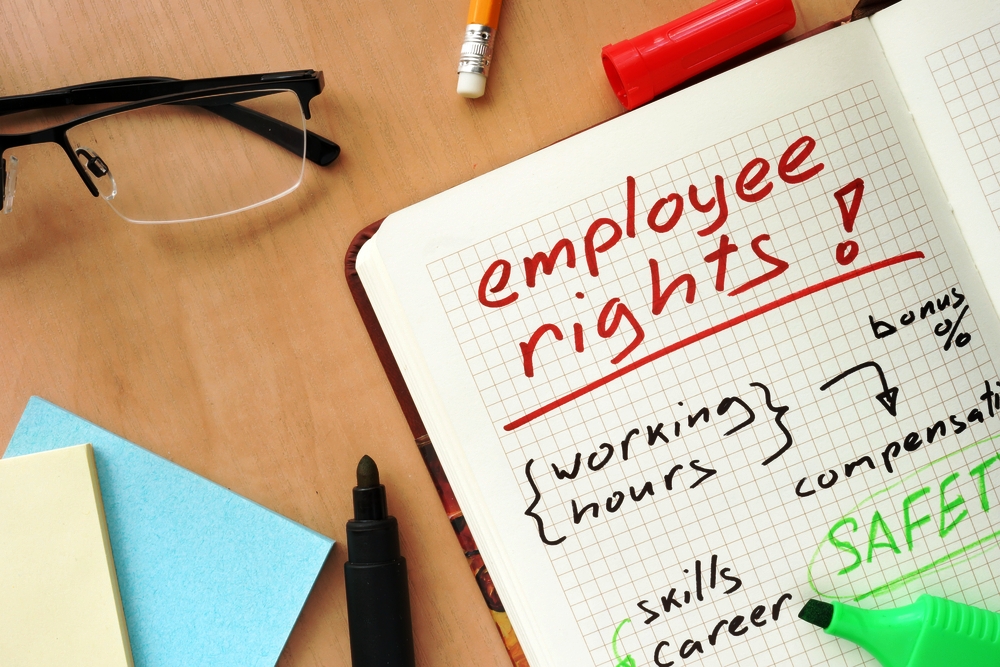The ability for employers to keep track of those who work for them is a tremendous leap forward in workplace technology. The problem is that there’s always a limit. You need to know the difference between surveying your employees and invading their privacy.

Licensed Image from Shutterstock – By Minerva Studio
We take a look at this issue and how it could impact the workplace.
Breaking Privacy
There’s always the problem of invading privacy. You don’t want employees to think that big brother is watching them at all times. It puts them on edge and can damage morale.
In many countries you also have to take into account the rule of law. Most countries have laws against how far you can monitor your employees, such as not putting security cameras in workplace bathrooms.
But that doesn’t mean you have to eliminate surveillance entirely. You still have options open to you for monitoring your employees.
Getting the Most from Your Employees
In an ideal world you could expect your employees to give their all every minute of the day. But we don’t live in an ideal world and sometimes employees are going to slack off and enlist their fellow colleagues in enabling them to do that. Think checking in on their behalf.
Also Read

Licensed Image from Shutterstock – By tsyhun
You must get the most from your employees.
One example of this is the employee time clock. This has the ability to make sure employees are actually working when they say that they are. Companies handed out 202 million wearable devices in 2016 for the purpose of making sure this happens.
And this data is extremely valuable for companies.
It’s Necessary
One stat reveals that 40% of all American workers are expected to be contract workers by 2022. Managers will no longer have direct access to their employees. This trend is unavoidable and something must be done to solve that problem. The only option is to implement measures to survey them.
Any company would be stupid to not use such mechanisms for ensuring that employees do what they’re supposed to do.
What are the Legal Rights of Employees?
It’s important to understand what employees can legally expect from the companies that hire them. The truth is that in the US there’s almost nothing preventing employers from monitoring anything they like.

Licensed Image from Shutterstock – By designer491
Anything from GPS to keystrokes are open to the modern employer. For employees who learn about this it’s disturbing for them.
But just because you can conceivably monitor anything you want doesn’t mean you should.
How Should You Balance Privacy with Necessity?
The answer to this is to balance work matters with private matters. You can’t reasonably expect to encourage employees by forcing them to submit every word and every action to the man upstairs. It’s necessary to find a balance.
Think about whether what you’re monitoring is really necessary. Monitoring when your employees are on the clock is one thing but monitoring their precise keystrokes is quite another.
You also must know that employee morale is essential to productivity and if you fail to maintain that surveillance is not going to force them to work harder.
There has to be an element of trust within your workforce.
That element of trust has to come from being able to send the message to everyone under your command that you believe they’ll carry out the work they’ve been assigned.
Try to get away from enforcing hourly productivity rates and focus on the project being completed by its set deadline. After all, if the work gets done do you really care if an employee took out five minutes to check their Facebook? Of course not, because the work happened and that’s what matters to you as the employer.
Last Word – Don’t Go Too Far
Just because you can watch someone from the moment they enter the company building doesn’t mean you should. These tools at your disposal should only be used to give you valuable data without upsetting the people you’re working with.
Make your employees aware of what’s going on and ensure they consent before you implement it. Without this consent you’re essentially imposing your will upon them. That’s never a good road to go down.
Have you started to use surveillance techniques to monitor what your employees are doing at work?
